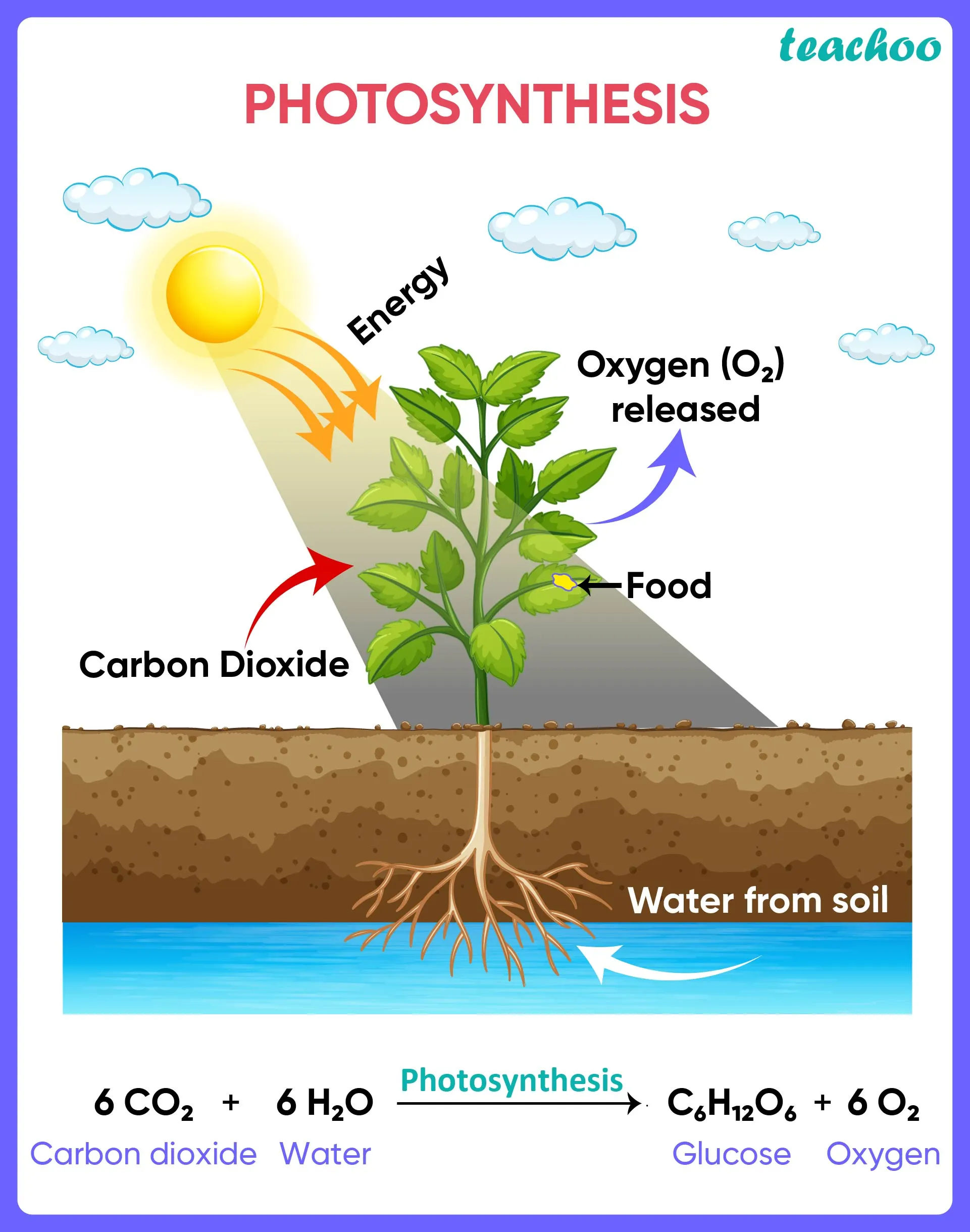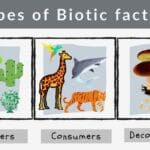Dive into the fascinating world of photosynthesis, where carbon embarks on an extraordinary journey, shaping life as we know it. We’ll trace the path of carbon atoms, the very essence of life, through the intricate process that transforms sunlight into energy-rich sugars.
What Happens to Carbon Atoms in Photosynthesis?
Plants seem to perform magic, growing from thin air and sunlight. This “magic” is photosynthesis, powered by the remarkable journey of carbon atoms. Plants need carbon to build everything from their stems and leaves to their flowers and fruit. But where do they find it? The answer is all around us – in the air!
The air is full of carbon dioxide (CO2), a molecule composed of one carbon atom bonded to two oxygen atoms. Plants absorb CO2 through tiny openings on their leaves called stomata. This is where the real magic begins.
Plants act like master builders, using energy from sunlight to split water molecules. This process releases oxygen back into the air (lucky for us!). Next, plants use special enzymes to break apart CO2, separating the carbon atom from its oxygen companions.
The journey continues as the plant uses these single carbon atoms, combined with hydrogen from the split water molecules, to build new, larger structures called glucose. Glucose is a type of sugar that serves as the plant’s primary source of energy – its self-made fuel!
But the journey doesn’t end there. When we eat plants (or animals that have eaten plants), we’re taking in that stored carbon. Our bodies break down the glucose, releasing the energy stored inside. And finally, when we exhale, we release carbon dioxide back into the atmosphere, continuing the cycle.
What Happens to an Atom of Carbon During Photosynthesis?
Let’s follow a single carbon atom on its journey through photosynthesis. Imagine this carbon atom, likely part of a CO2 molecule, floating in the air. Suddenly, it’s pulled into a leaf through a stoma, entering the bustling world of photosynthesis!
Inside the plant’s cells, a process called the Calvin cycle is in full swing. Like a factory powered by sunlight, this cycle uses energy from photons to attach the carbon atom to other molecules, building more complex structures.
The plant combines the carbon atom with water drawn up from the roots to create those energy-rich sugars – glucose. And remember how water is split earlier? The oxygen released during that process is what we breathe – a beautiful exchange between plants and animals.
Our carbon atom’s journey doesn’t end there. The newly formed sugar molecule, with our carbon atom nestled inside, could become part of the plant’s structure – its leaves, stems, or flowers. Or, an animal might munch on the plant, transferring the carbon atom to the animal’s body. It’s a continuous cycle of carbon moving through our ecosystem!
What happened to carbon during photosynthesis?
Let’s zoom in on the transformation of carbon during photosynthesis. Plants take in carbon dioxide and water and, using sunlight, turn them into food. But what’s really happening to the carbon?
Think of a carbon dioxide molecule like a tiny train car carrying a carbon atom. When it enters the plant’s chloroplasts, the power of sunlight splits water molecules apart, releasing oxygen as a byproduct. The hydrogen atoms from the water then jump onto those carbon dioxide train cars, transforming them into something new: glucose!
Carbon is the ultimate recycler. When we eat plants, or animals that have eaten plants, we’re absorbing the carbon stored in glucose. And when we exhale, we release some of that carbon back into the atmosphere as carbon dioxide – a beautiful cycle of life!
Here’s the gist:
- Plants transform carbon from carbon dioxide into glucose – their energy source.
- This process, fueled by sunlight, also releases oxygen back into the air.
- The carbon in glucose eventually returns to the atmosphere through animal respiration and decomposition.
- Carbon is constantly cycling through the environment, and photosynthesis is a crucial stop on its journey.
What happens to carbon atoms as a result of respiration?
We’ve talked about how our bodies use glucose for energy, like burning fuel to power a car. But what happens to the “exhaust” from this process? Just like a car releases exhaust fumes, we exhale carbon dioxide (CO2).
During respiration, the carbon atoms from glucose combine with oxygen, forming CO2, which we breathe out. But this CO2 doesn’t just disappear. Plants use it during photosynthesis, absorbing it along with water, and using sunlight to create more sugars for energy!
This exchange of carbon is known as the carbon cycle. Respiration plays a vital role in maintaining the right balance of carbon in the atmosphere.
However, scientists are still unraveling all the details of this complex cycle. For instance, the role of the ocean in absorbing CO2 and the impact of deforestation and fossil fuel use are areas of ongoing research.
Does the Number of Carbon Atoms Change During Photosynthesis?
Carbon atoms are the stars of photosynthesis, acting as the building blocks for everything plants create. But do these carbon atoms multiply or vanish during this process?
The answer is no. The number of carbon atoms remains constant throughout photosynthesis. They’re simply rearranged, like dancers switching partners in a carefully choreographed routine.
Plants don’t create new carbon atoms; they just rearrange existing ones. This constant shuffling is crucial for life on Earth. Carbon atoms move from the air to plants, potentially to animals that eat those plants, and eventually back into the environment. This intricate carbon cycle helps maintain balance in our planet’s atmosphere and provides the energy to fuel all living things.
While the total number of carbon atoms stays the same, scientists are still exploring the precise pathways these atoms take during the complex chemical reactions within plant cells.
In essence, the carbon atoms are simply rearranging themselves in the intricate dance of life.
What is happening to atoms in photosynthesis?
Let’s take a closer look at the atomic dance party happening during photosynthesis.
Imagine a carbon atom floating freely in the air as part of a carbon dioxide molecule. Along comes a plant, using sunlight to split that molecule apart, freeing the carbon atom.
Meanwhile, water molecules are also splitting. Sunlight energizes their electrons, causing them to separate from the water molecule. The remaining oxygen atoms pair up to form the oxygen gas we breathe.
Now for the grand finale: those freed carbon atoms link up with the hydrogen atoms left over from the water molecules. Together, they form glucose, the plant’s primary energy source.
Here’s a recap:
- Sunlight is the energy source that drives the entire process.
- Water molecules split, providing oxygen and making hydrogen atoms available.
- Carbon dioxide is broken down, freeing carbon atoms to bond with hydrogen and form glucose.
Our understanding of photosynthesis is always evolving as scientists uncover new details about this complex process. Who knows what other atomic surprises await?
What happens to carbon atoms in the carbon cycle?
The carbon atoms in a plant’s glucose don’t stay put for long. When animals eat plants (or other animals that have eaten plants!), those carbon atoms continue their journey.
Remember how we breathe in oxygen and breathe out carbon dioxide? This exchange is central to the carbon cycle. Animals use the energy from food, and in the process, those carbon atoms combine with oxygen to form CO2, which is released back into the atmosphere when we exhale.
The cycle continues even after death. Tiny decomposers break down dead plants and animals, releasing even more carbon dioxide into the air.
Think of it as a giant roundabout. Carbon atoms are constantly hopping on and off, traveling through the air, plants, animals, and back to the atmosphere. This flow – the carbon cycle – sustains life on Earth as we know it.
But scientists are still piecing together all the details. For example, the long-term storage of carbon in fossils and the role of oceans are areas of active research.
How Does Carbon Affect Photosynthesis?
We’ve established that photosynthesis is like a life hack for plants, allowing them to create their own food using sunlight. But what about the ingredients in this recipe for life? Carbon plays a starring role!
Carbon is the fundamental building block of all living things. In photosynthesis, the specific form of carbon that takes center stage is carbon dioxide (CO2). Plants act like miniature factories, using photosynthesis as their production line. They take in CO2 from the air and, powered by sunlight, transform it into glucose – their energy source. As a bonus, this process releases oxygen into the atmosphere.
The amount of carbon dioxide in the atmosphere directly impacts a plant’s ability to photosynthesize. Think of it like supplying those tiny factories with more raw materials.
This relationship between carbon and photosynthesis is a two-way street. As plants absorb CO2, they help regulate Earth’s climate, acting as guardians of our atmosphere.
However, scientists are studying how climate change, with rising temperatures and changing weather patterns, might impact the effectiveness of photosynthesis. It’s a critical question with implications for the future of our planet.
Understanding the interplay between carbon and photosynthesis is crucial for grasping the delicate balance of our planet’s health. Each new discovery brings us closer to understanding the power of nature and the vital role plants play.
What happens during photosynthesis in the carbon cycle?
Photosynthesis is a crucial process within the larger carbon cycle. Imagine carbon dioxide (CO2) floating in the air. Plants have the remarkable ability to absorb this CO2 during photosynthesis, almost like taking a breath, and use it to create something essential: glucose. This glucose fuels their growth and, thankfully for us, releases oxygen back into the atmosphere.
Let’s break down the magic of photosynthesis:
Step 1: Catching the Light
Plants act like solar panels, absorbing sunlight through their leaves. This light energy is captured by chlorophyll – the pigment that gives plants their green color – and converted into usable energy.
Step 2: Splitting Water, Powering Up
With energy from sunlight, plants split water molecules (H2O) into hydrogen (H) and oxygen (O2). The oxygen is released into the air, providing us with the air we breathe, while the hydrogen is saved for the next step.
Step 3: Building Blocks for Food
Here’s where the CO2 comes in. Plants combine the hydrogen atoms from water with the carbon from CO2 to form glucose (C6H12O6) – their primary energy source.
The Circle of Life: Carbon’s Journey Continues
The glucose produced during photosynthesis isn’t just for plants. When animals eat plants (or animals that have eaten plants), the stored carbon continues its journey, becoming part of the animal’s body. When we exhale, we release CO2 back into the atmosphere, completing the carbon cycle.
Research on photosynthesis continues to unveil new insights, suggesting variations in how different plant species carry out this process and the influence of environmental factors.
How the Carbon Atoms are Present in Photosynthesis?
Let’s follow the carbon atoms as they move and change during photosynthesis.
Step 1: Grabbing the Carbon
Plants act like carbon magnets, using tiny openings on their leaves called stomata to draw in carbon dioxide from the air.
Step 2: Water Does a Split
Water plays a crucial role in this process. Plants use sunlight to split water molecules (H2O) into hydrogen (H) and oxygen (O). The oxygen is released, and the hydrogen is ready for action.
Step 3: The Calvin Cycle – Where the Magic Happens
Welcome to the Calvin cycle! Imagine a bustling factory inside the plant cell where the hydrogen from water, energized by the sun, combines with carbon dioxide to create glucose – the plant’s primary fuel.
Here’s the gist:
- Plants absorb carbon dioxide (CO2) from the air.
- Sunlight powers the breakdown of water into hydrogen and oxygen.
- The Calvin cycle uses the energized hydrogen and carbon dioxide to create glucose.
Scientists are still uncovering new details about this remarkable process.
What is the carbon reaction in photosynthesis?
Now, let’s delve into the carbon reaction, also known as the Calvin cycle, where carbon dioxide is transformed into sugar.
This process unfolds in the stroma of chloroplasts, powered by energy packets (ATP) and electron carriers (NADPH) generated in the earlier, light-dependent reactions.
It starts with the enzyme Rubisco, which grabs CO2 from the air and attaches it to a sugar molecule called RuBP. This creates a larger molecule that quickly splits into two smaller molecules called 3-PGA.
These 3-PGA molecules then embark on a series of transformations, powered by ATP and NADPH. They eventually become G3P, a versatile sugar.
Some G3P molecules become the building blocks for glucose, providing energy for the plant. The remaining G3P molecules return to the cycle to process more CO2.
Scientists are still working to understand the intricate details of this complex process.
Here’s a simplified view:
- Sunlight: The fuel that powers the entire factory.
- Light-dependent reactions: The generators, producing electricity (ATP) and delivery trucks (NADPH).
- Calvin cycle: The production line, assembling sugars from carbon dioxide using the energy and supplies from the light-dependent reactions.
- Rubisco: The master assembler, attaching carbon dioxide to sugar molecules and setting the production line in motion.
- 3-PGA and G3P: Intermediate products on the assembly line, transforming step-by-step until glucose is produced.
The carbon reaction is a vital part of photosynthesis, highlighting the interconnectedness of natural processes and the importance of scientific inquiry.
Key Points about Carbon Atoms in Photosynthesis:
- Carbon atoms are the building blocks used by plants to grow.
- Plants acquire carbon dioxide (CO2) from the air through stomata.
- Using sunlight, plants split water molecules, releasing oxygen and separating carbon atoms from CO2.
- Plants reassemble carbon atoms into glucose, a sugar used for energy.
- When animals eat plants, they consume stored carbon.
- When animals breathe out, they release CO2 back into the atmosphere.
- Carbon cycles continuously from the air to plants, animals, and back to the air.
- Different plant species have unique mechanisms for capturing and using carbon.
If you are looking to find out what happens when carbon atoms are fried, then you should click here: what happens to carbon atoms when fried.
- Mastering Leader in Spanish: The Complete Guide - April 19, 2025
- Uncovering Surprising Parallels: England Size Compared to US States - April 19, 2025
- Old Mexico Map: Border Shifts 1821-1857 - April 19, 2025
















